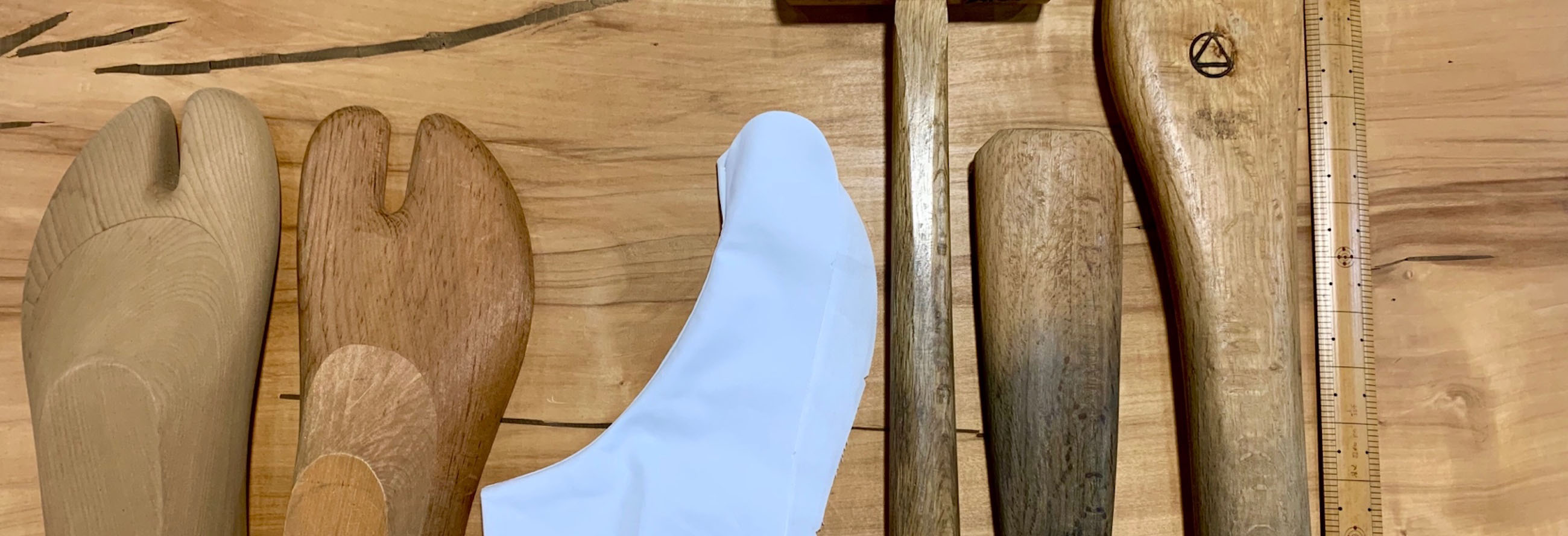


They are Japanese socks dating from ancient times, whose
toe is split into the big-toe side and the four-toe side.
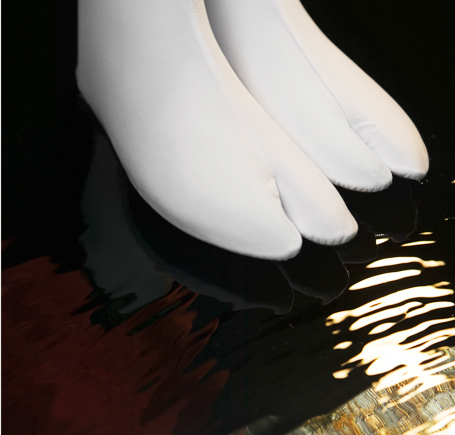
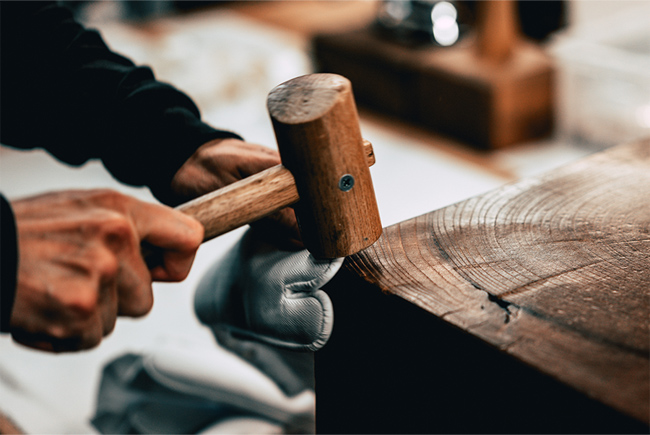
Originally bag-like footwear was transmitted from China to Korean Peninsula,
and its toe got split after coming down to Japan. There are two theories on
the reason of its split toe: the theory that it got split in order that it was easy
for samurai to put some muscle and the theory that it was made to suit to
footwear such as Japanese sandals and Japanese clogs.
Its beginning is said that the tabi production began in Kyushu and was transmitted to Kanto through Chugoku, Shikoku, and Kansai, but Gyoda got famous for the tabi production because it had been encouraged in the castle town since over 300 years ago and the distribution from Edo through Nakasendo Road used to be popular at "Fukiageshuku." No less than 84 million pairs of tabi were produced in even only Gyoda in early stages of Showa, and the situation continues up to today. Although the number of tabi manufacturers has been reduced from over 200 to 12, the tabi production of Gyoda is the greatest in the country even now.
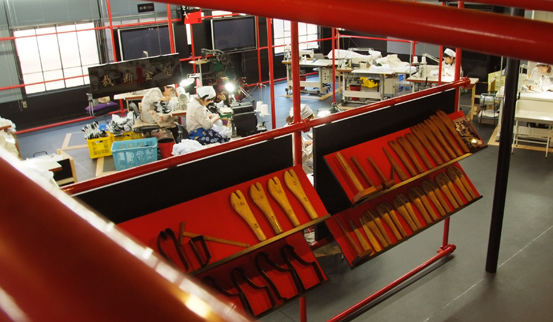
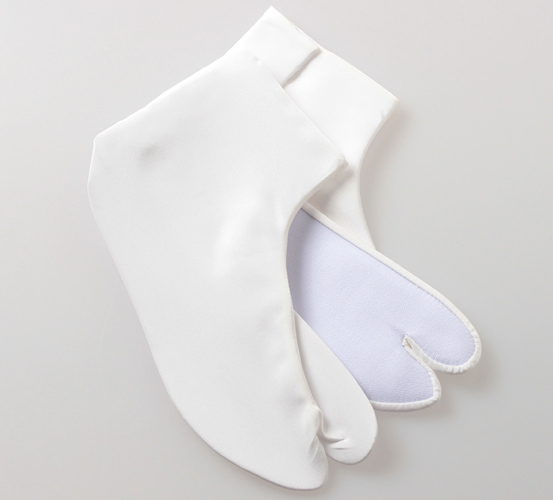
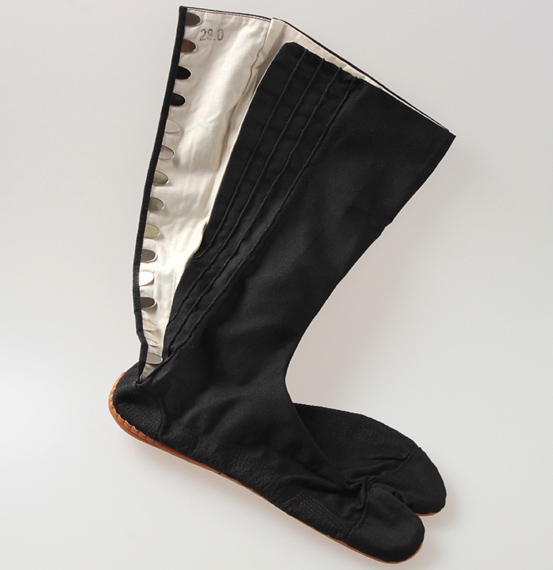
Kineya Tabi was a follower tabi company in Gyoda. Takeo Nakazawa established it as "Nakazawa Tabi Private Limited Company" after the war in spite of the contrary of a bank. It subcontracted in the beginning. Triggered by supplying tabi to geisha girls in line with his hope of making and spreading original tabi, it spread throughout the country. Now, changed its name to "Kineya Tabi Co., Ltd," it is a company of production and distribution not only of white tabi but also of work tabi, semi-custom tabi, and festival articles, which has been proud of the tabi production. They don't only keep up a tradition of tabi but also try the product development which suggests tabi newly to new channels, taking advantage of its technique and tabi's strong point.
They are used for works in which uniforms such as kimono are worn: traditional-Japanese-cuisine casual eating pub and traditional-Japanese-cuisine restaurant. Japan has the most people who wear special traditional dresses for hobbies in the world: kabuki, Japanese dance, the tea ceremony, kyudo, practice, a school for wearing kimono properly, ceremonial occasions, temples, and shrines. They are mainly used as tabi coordinated with a kimono for a hobby.
Their softness and flexibility make their use specialized because their soles are made of 100% natural materials rarely to be seen with nowadays and stitched all by hand, therefore, they are for craftsman such as a steeplejack, gardeners and so on.
Triggered by Shoji Takaoka, who is an acupuncturist, a running coach, an adviser,
and runs a full marathon in 2 hours and 45 minutes with bare feet, we produced
tabi shoes runners can wear with a feeling of bare feet. They aren't made for visual
curiosity, but become a trigger to understanding and improvement of runners'
weight transfer and running manner. They enable runners not only to raise performance
but also to learn the injury-free running manner with their own physical sense.
The basic concept and idea of Toe-Bi is the same as Kineya Muteki.
They enhance a fit feeling and also have the refurbished materials.
Velcro tapes attached to their soles are their feature. Wrapping the
arches of the feet, the Velcro tapes fix themselves on the feet.
That makes a fit feeling enhanced, and fixing the top of the foot makes
the toe easy to move.